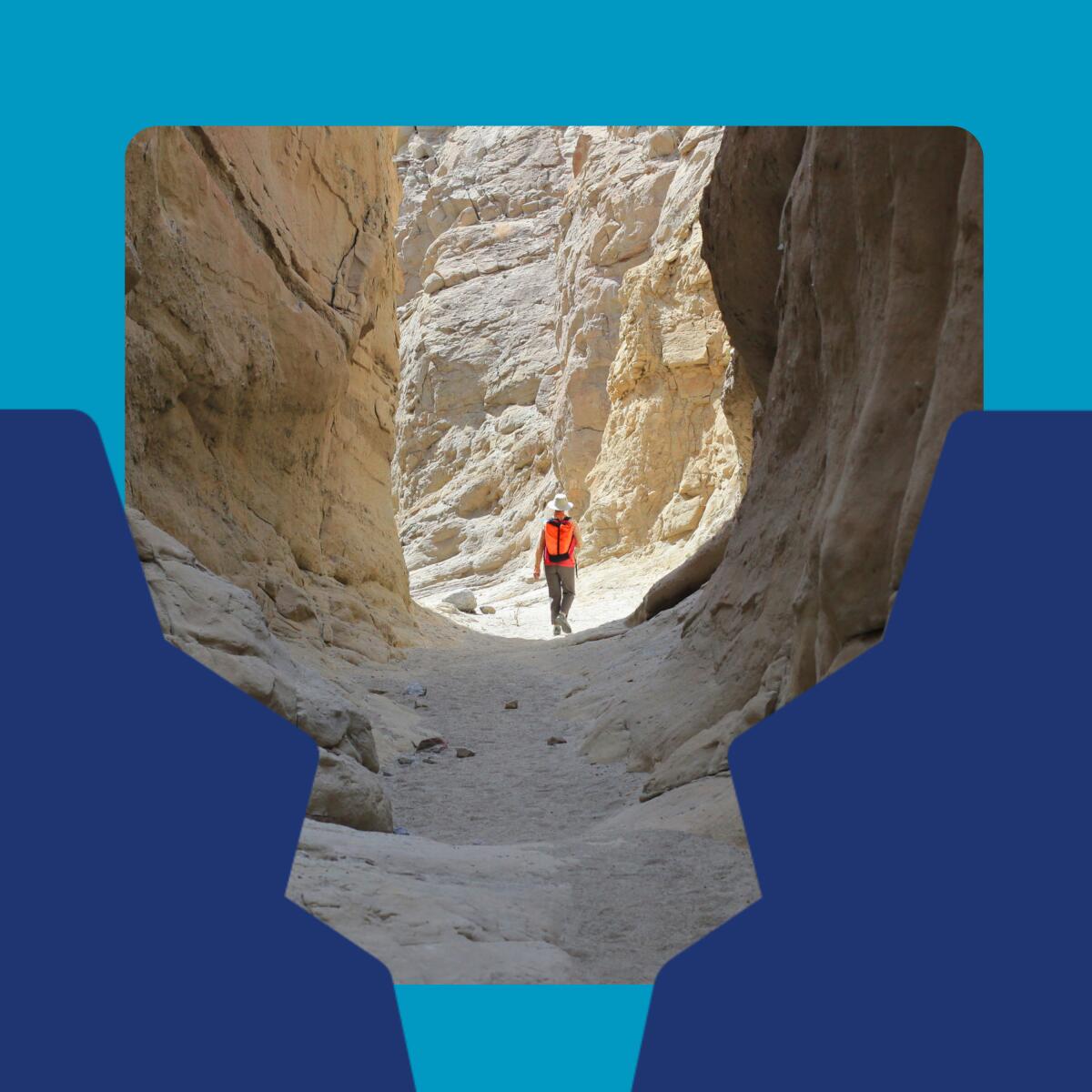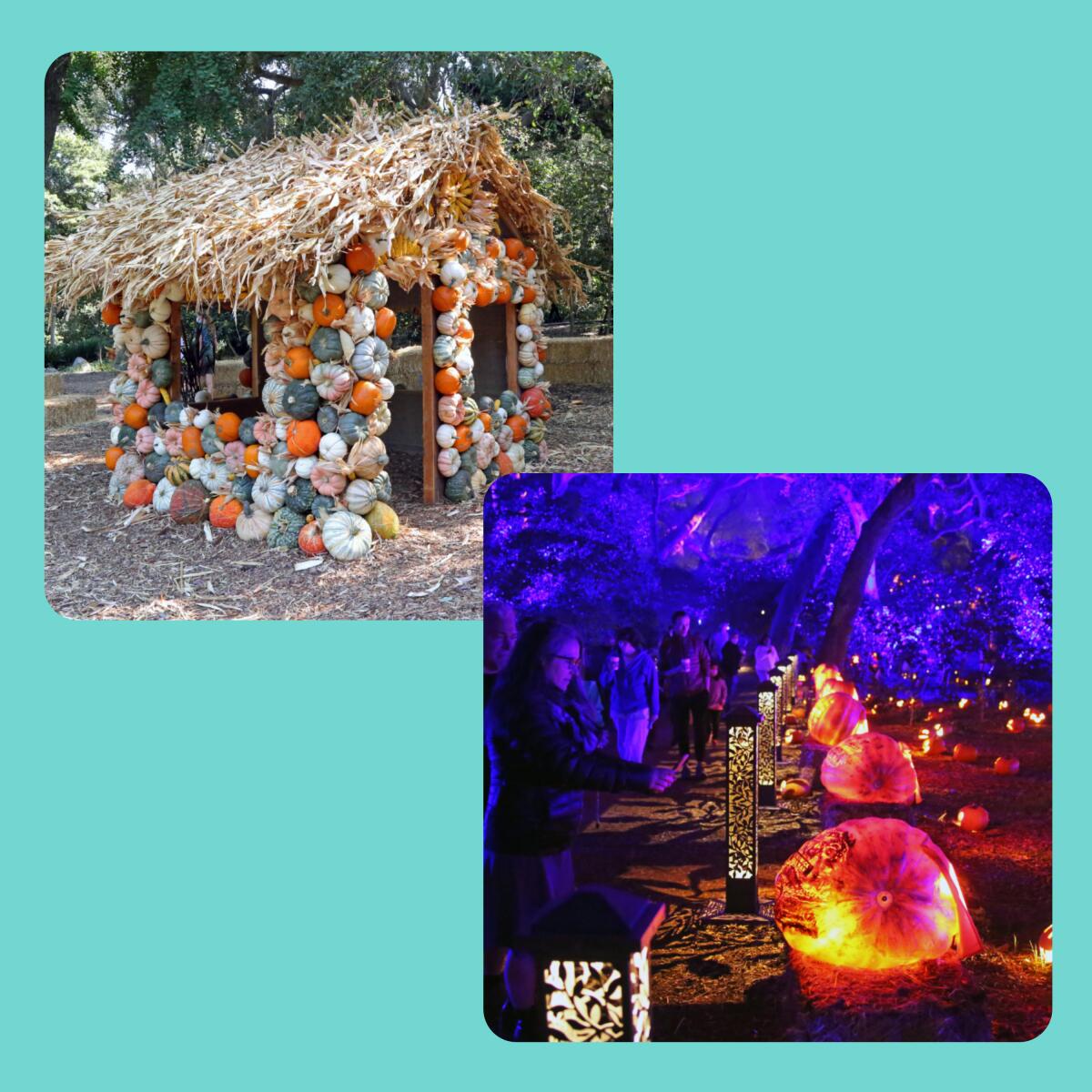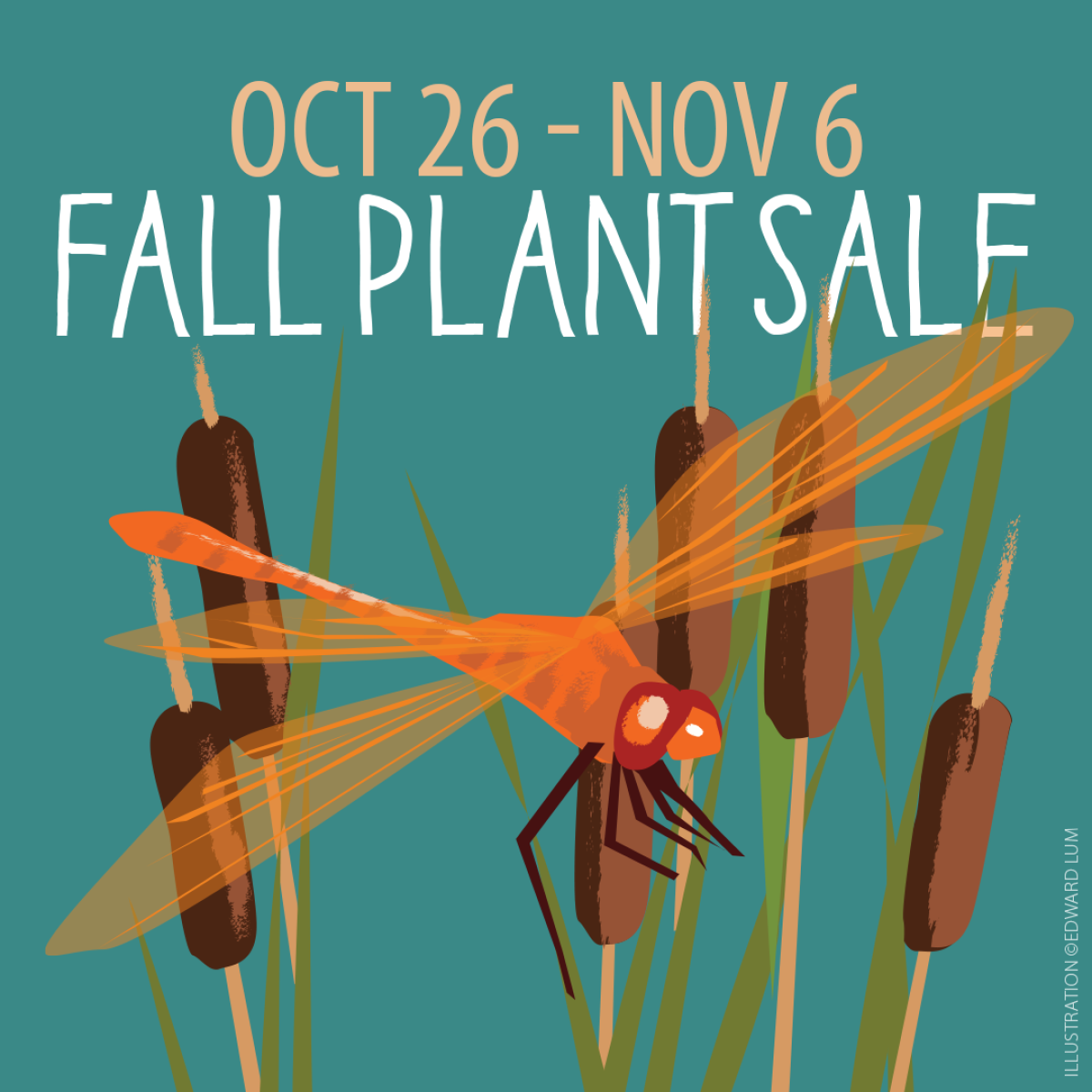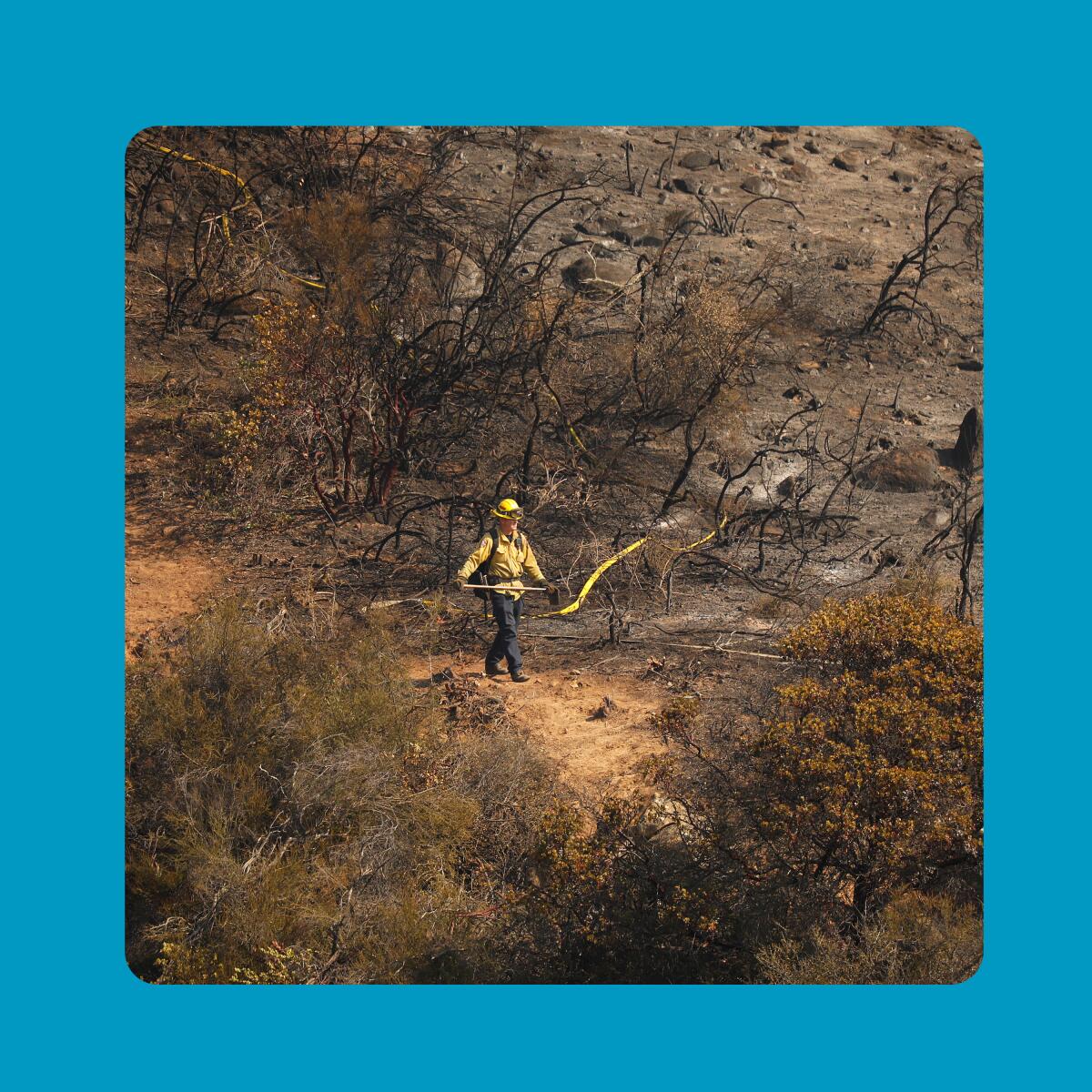Where to see California’s dwindling monarch butterflies

- Share via
Finally, a sliver of hope for Western monarch butterflies. The migrating insects are turning up a bit earlier than usual at well-known groves in Central California.
But let’s start with the truly dreadful news in case you haven’t been paying attention: The number of monarchs that migrate to the West Coast has dropped by 99.9%. Got that? Hundreds of thousands of butterflies — orange and black ribbons dangling from trees that once were so dense they became instant tourist stops in California — have vanished, particularly in the last five years.
What can we expect this season?
“It’s really the million-dollar question,” says Emma Pelton, senior conservation biologist with the Oregon-based Xerces Society, which tracks and advocates for monarchs and other insects. “We had less than 2,000 butterflies from all of the [West Coast] overwintering sites combined last year. That’s pretty abysmal given that a few years ago we saw 20,000.”
Take the popular Monarch Grove in Pismo State Beach. More than 28,000 butterflies were counted in 2016. That number dropped to less than 2,000 as of January 2020, according to the Pismo Beach website. Why? It’s not really known. Loss of native milkweed, a key host plant for monarchs, loss of overwintering sites and pesticide use in urban and agricultural settings may be to blame, along with climate change.
Let’s return to the scant signs of hope. Although official counts have not begun yet, Pelton said the known monarch grove in Pacific Grove, Calif., near Monterey saw 1,300 butterflies last weekend — reason enough to be cautiously excited. (To understand monarchs’ extraordinary migration and routes, check out this explainer posted by the Pacific Grove Museum of Natural History.)
The Monarch Grove at Pismo State Beach reported an unofficial count of 8,000 monarchs right now. “This is very early for them to show,” state park interpreter Danielle Bronson said. Butterflies can’t fly until temperatures warm to 54 degrees Fahrenheit. If you go to see them, start early when it’s cold. They cluster amid red and blue gum eucalyptus trees, which aren’t native but have become an adapted home. As it warms up, you’ll see them flutter in the grove.
Monarchs usually arrive in November and stay through February. Historically peak time falls between Thanksgiving and Christmas. Popular sites to visit include the Monarch Grove Butterfly Sanctuary in Pacific Grove, the Butterfly Grove at Pismo State Beach and Natural Bridges State Beach in Santa Cruz. You also may find places closer to Southern California to see butterflies too. Pelton said monarchs have been seen overwintering at 400 sites on the West Coast.
Things you can do to help monarchs:
— Plant native milkweed in your garden (see the fall plant sale at the Theodore Payne Foundation below).
— Read up on a bill languishing in Congress called the Monarch Act of 2021. It would allocate $12.5 million per year for the next five years to rescue Western monarchs.
— Help gather data for the Western Monarch Milkweed Mapper by uploading sightings of plants and butterflies.
— Attend a free Zoom presentation about migratory monarchs by the Elkhorn Slough on Monterey Bay from 5:30 to 7 p.m. Oct. 21.
5 things to do this week

1. Discover San Diego’s hidden wild spaces with the pros — for free. For almost half a century, volunteer Canyoneers at the San Diego Natural History Museum have hosted guided hikes that highlight history and habitat in deserts and forests around San Diego County. The hikes, halted last year because of COVID-19, have restarted and will continue through June. Coming up: a seven-mile hike in San Dieguito Park on Nov. 14 and a five-mile hike to see Engelmann oaks at Daley Ranch on Nov. 16. Hikes are free but require advance registration (and they fill fast, so sign up early). Register here for upcoming hikes.

2. Get a jump on Halloween with pumpkin (not pumpkin spice) everything at Descanso Gardens. I like a Halloween vibe that’s more gourdy than gory. The folks at Descanso Gardens in La Cañada Flintridge understand, which is why they created a pumpkin wonderland rather than a fright fest. There’s a Pumpkin House, a Pumpkin Arch leading to the Camellia Forest, pumpkin mandalas at the base of trees at the Oak Grove, carved pumpkins and other decorations that last through Oct. 31. Tour the gardens 9 a.m. to 5 p.m. with timed tickets purchased in advance (nonmembers pay $15 for adults, $5 for children 5 to 12; free to members) or the night light show, Carved, for the after-hours crowd from 6:30 to 10 p.m. ($25 to $28 for members, $32 to $35 for nonmembers). More info at descansogardens.org.

3. Learn about the origins of Asian-style gardens and why we seek refuge in them. Gardens landscaped in the style of Japanese and Chinese tradition have been sought out as aesthetic escapes for centuries. But why? A panel of experts — including Phillip E. Bloom, Chinese Garden curator at the Huntington Library, Art Museum, and Botanical Gardens in San Marino; Andrew M. Lueck, Asian art specialist at Christie’s; and Sada Uchiyama, chief curator at the Portland Japanese Garden in Portland, Ore. — will discuss the role these gardens play during a free online webinar, “The Luxurious Garden and the Gratification of Retreat,” at 2 p.m. Pacific Time Oct. 28. Sign up here.

4. Ready for some early snow play? Yep, snow tubing is open in Big Bear Lake. Night temperatures in the 20s and 30s last week jump-started snow-making at Big Bear Snow Play. The snow park, about 100 miles from downtown L.A., opened Oct. 16, the earliest opening in its 22-year history. Take a “magic carpet” (airport-like moving walkways) to the top of a wide ridge and slide down on a tube. Snow-making is expected to continue, as temperatures allow. The site will be open 10 a.m. to 4 p.m. Saturdays and Sundays through Nov. 6, when operations are set to go daily. Tickets cost $40 for adults and $25 for children 36 inches to 42 inches tall (participants must be at least 36 inches tall). More info here.

5. Start your native plant garden with a visit to this fall plant sale. In case you didn’t know, fall is the time to put Southern California native plants in the ground. That’s why the Theodore Payne Plant Foundation in Sun Valley is hosting a fall plant sale with a wide variety of native seeds and plants for your back yard or favorite pots. Flower and landscape experts will be on hand to help you choose what’s best for your habitat. Members receive a 15% discount; 10% discount for nonmembers. Reservations are required (good for a vehicle with up to four people) for the sale that runs from Oct. 26 to Nov. 6. More info here. Here are other places to shop for native plants.
The red flag

Fire crews have made remarkable progress in containing the Alisal fire in the Santa Ynez Mountains near Santa Barbara. However, parts of the Los Padres National Forest remain off limits at least through Nov. 16. A U.S. Forest Service order temporarily closes the burn area, which is shown in detail on this map. Popular coastal sites such as Refugio State Beach and El Capitan State Beach closed temporarily and will remain shut until further notice, according to the California State Parks website. Gaviota State Park is open, but trails to the hot spring area remain closed. The Tequepis, Baron Ranch and Gaviota Peak trails are closed too. Also, open wood and charcoal fires are banned in all parts of the national forest. Campers who want to use gas or other fuel-powered stoves and lanterns must have a California Campfire Permit. As of Tuesday, the 17,254-acre fire was 93% contained.
The must-read

What’s it like to go on your first backpacking trip to one of SoCal‘s most remote and rough islands? It can be a little hairy — like that moment when a 2,000-pound elephant seal shows up right outside your tent. Times staff writer Lila Seidman wrote about her experience on a four-day camping trip to Santa Rosa Island in Channel Islands National Park: “On a warm, sunny day Santa Rosa can pass for a postcard-perfect tropical getaway with sandy white beaches and glittering turquoise water. But it can be harsher than online photos portray. Strong winds blow year-round. Moody bouts of dense fog and chilly temperatures evoke conditions similar to the Central Coast. Those who seek out ‘Rosa’ are attracted to seclusion and are self-sufficient, with ample backpacking experience. ... I checked none of the boxes.” Read the full story here.
P.S.

There’s a mountain lion sucking up a lot of social media love. P-99 — the 99th lion to be part of the ongoing study of big cats living in the Santa Monica Mountains — has been a hit since her face was posted on social media by the Santa Monica Mountains National Recreation Area. “She’s gorgeous! Grateful to be living with these beautiful majestic cats,” @mybrentwoodgarden gushed on Instagram. Read more about P-99 and her fans here.
Send us your thoughts
Share anything that’s on your mind. The Wild is written for you and delivered to your inbox for free. Drop us a line at [email protected].
Click to view the web version of this newsletter and share it with others, and sign up to have it sent weekly to your inbox. I’m Mary Forgione, and I write The Wild. I’ve been exploring trails and open spaces in Southern California for four decades.

Sign up for The Wild
We’ll help you find the best places to hike, bike and run, as well as the perfect silent spots for meditation and yoga.
You may occasionally receive promotional content from the Los Angeles Times.




